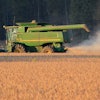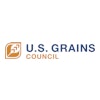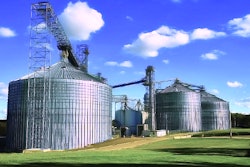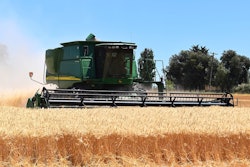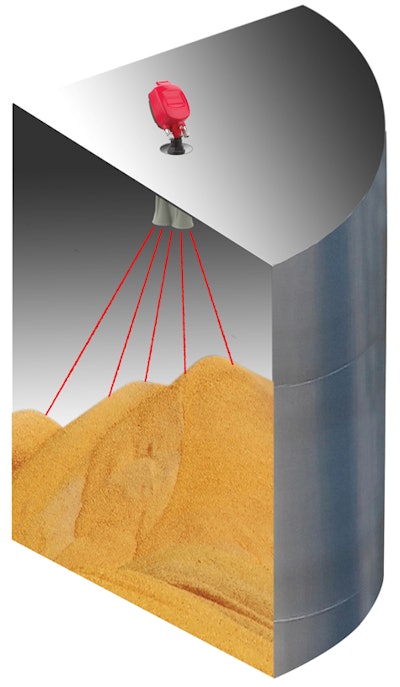
For almost a decade, 3D Level Scanners have been providing highly accurate level and volume measurement in challenging materials contained in bins, tanks, and silos.
The only sensor to measure and map the material surface, it sends pulses in a 70° beam angle, taking multiple level measurements and accounting for uneven surface topography when calculating volume.
Each sensor comes with 3DVision software that reports the lowest and highest points detected and the average level based upon a weighted average of all measurements in the bin. For the MV and the MVL models, a colorful graphical representation indicates where high and low spots exist in the silo.
3D scanners keep pushing the boundaries –- and addressing the concerns of increasingly complex grain storage operations. This article shares a few of the newest innovations.
View multiple silos on a single screen
MultiVision software for inventory visibility across an organization
库存管理影响多个部门across grain storage or processing operation. Plant personnel need accurate volume to manage storage and sales, and finance needs accurate valuation for financial statements. To provide corporate-wide visibility, the optional 3D MultiVision software enables users to view data for multiple bins in a single window. Since it is Windows-based, it can be configured for 24/7 access via an organisation’s Local Area Network (LAN).
MultiVision software can be used with all versions of the noncontact, dust penetrating 3DLevelScanner including the RL, S, M, MV and MVL models. By clicking on a single bin, users can zoom in on detailed information for the bin including minimum, maximum, and average levels.
For the MV and MVL models, they can also see the 3D visualisation of bin contents. The software allows multiple users at multiple locations to view bin level and volume data on a permissions basis.
3D MultiVision software makes it easy to share real-time bin data across the entire organisation (or with vendors using VMI) to improve purchasing, logistics, operational decisions, and financial management. With user-friendly setup and intuitive operation, each user can customise their screen to view all bins or a group of bins and color-code bins by material type. Users can set high and low-level alerts to be notified when bins reach critical levels. Because the software is installed on the LAN, there are no third-party applications or data access fees.
Detect and alert to center of gravity danger
Prevent silo collapse or damage using 3DLevelScanners
Grains are known to build up on sidewalls, bridge, pile unevenly, and flow unpredictably from storage vessels. Not only does this make monitoring the volume of material inside the vessel challenging; uneven disbursement of material can also take its toll on the storage vessel itself.
Over time, the walls of steel or concrete silos have been known to wear or fail causing cracking, denting, buckling, and bending. In the most severe cases, it can lead to catastrophic silo collapse. This has been seen in grain bins worldwide, where the walls of large storage vessels give way to the weight of grain that has built up on one side of the bin over time.
For plant operations that want to detect uneven loading of silos that contributes to structural wear or failures, there is now a software option that uses 3DLevelScanners to identify the location of the center of gravity, display it graphically, and alert when the center of gravity falls outside of a predefined area.
A 3DLevelScanner is mounted on the roof of the silo in an optimal location to view the material surface in the silo. Level measurements are used to determine the X, Y, and Z coordinates of the center of gravity based upon the material topography. The coordinates are processed in 3DMultiVision software via a proprietary RS-485 communication protocol. Users define the alert parameters and accepted area into which the center of gravity must fall. A 3D visual will indicate where the center of gravity is located and show if the current center of gravity falls in the acceptable area.
Operations can use this unique solution to help reduce structural stress when loading or emptying a silo. It is a valuable preventive maintenance tool that can alert to the need for inspection or cleaning. Use over time can prolong silo integrity and create a safer environment by alerting to potential structural stress caused by uneven loading.
Measure volume in a wedge or pie-shaped silo
Accurate inventory for ingredients in segmented silos
Grain or milling operations routinely handle grains at various stages of processing which can be stored in segmented silos.Tracking inventory by volume in these irregularly shaped spaces can be tricky, especially for flours or grains that want to build up along the interior walls or the outer silo perimeter. Plant operations or purchasing personnel burdened with managing inventory in pie-shaped segments of silos now have a solution that provides very accurate volume data. The 3DLevelScanner measures and models the topography of material contained in these unusual pie-shaped wedges. This newest release of 3DVision software update then applies the measured distances to a 3D model of vessel dimensions and converts it to a highly accurate volume measurement.
Other measurement sensors, such as non-contact radar, guided wave radar, or weight-and-cable style sensors measure only a single distance in these formidably shaped segments. The location of the filling or emptying points or lack of material flow may cause uneven piling of material, which could cause inventory estimates based upon a single measurement to be inaccurate. By comparison, the 3DLevelScanner maps the material surface accounting for variations or buildup then factors in the radius and height of the segment being measured, making the volume accuracy very precise.
Using a system that provides accurate data about the amount and dollar value of material on hand can help reduce safety stocks, increase inventory turns, and pay for itself by freeing up cash that could be tied up in inventory. This can be especially true for high-dollar rice, grains, and oilseeds being used in many contemporary or organic food products. Additionally, buildup on the outer perimeter of the silo segment or along on the
interior walls of each segment can be detected, accounted for in inventory, and addressed by maintenance if needed. The same 3DLevel Scanner can be used for either segmented or round silos, making it a versatile choice over its long sensor life.
Level monitoring in flat storage warehouses
Breakthrough technology measures level per section
With grain production worldwide reaching record levels, there is a shortage of grain storage as valuable commodities await further processing. An intermediate step to protect grain is the use of large covered storage buildings where grain is piled using overhead conveyors or vehicles. However, due to irregular piling, it is extremely difficult to estimate the amount of grain in these temporary warehouses.
Another revolutionary advancement not offered with any other inventory management system is a new software option that can measure the level of materials piled under structures. Multiple sensors measure and map levels across the material surface, while MultiVision software separates the piled material into virtual sections. Minimum, maximum, and average levels per section are reported for up to 99 unique sections. The data is aggregated to output a visual showing the topography of the entire storage building.
This first-of-its-kind solution is used to estimate inventory and improve production efficiency. Identifying high and low sections allows for automating process control and managing the filling or extraction of materials. In proven installations, up to 20 3DLevelScanners have been mounted in the upper structure of the warehouse roof. The building is virtually divided into sections as small as 1.5 by 1.5 meters with 3D sensors continuously measuring changes across the surface and providing unique visual and data reporting of inventory in the massive structure. This cutting-edge technology is ideal for corn or other grains stored in covered warehouses.
In 2009, 3D scanner technology started a revolution in precise inventory management. Their evolution continues to address the unique needs of industry as the worlds of sensor hardware and software intersect with new solutions.

